Why Do Red-Eared Slider Turtles Bite Each Other: Reasons and Prevention

Red-eared slider turtles bite each other as a means of communication or dominance. Turtles bite each other for various reasons- from territorial disputes to mating. You can observe this biting behavior in different turtle species, but the red-eared slider turtle is the least aggressive. Additionally, turtles can bite humans if they’re feeling threatened or if the human makes direct contact with the turtle.
Table of Contents
Reasons Why Red-Eared Slider Turtles Bite Each Other
Sliders are known for their territoriality, and one of the things they will do to assert dominance is bite other turtles. Don’t stress out if you see your slider turtle biting another turtle. It’s just part of their natural behavior. Slider turtles are known for their aggressive behavior, and territoriality is one of the reasons. When two slider turtles meet, they will often bite each other to mark their territory.
However, if the bite does result in injury, clean it with warm water and soap and seek medical attention as necessary. Bites from giant turtles are more likely to cause injury or death, while those from smaller turtles typically result in a scratch. If you witness your turtle biting another turtle, it is essential to get them separated as soon as possible.
If the biting turtle is injured, it is vital to take care of them as it may not be able to survive without medical attention. So the next time you see your turtle biting another turtle, be sure to intervene and help them get back to their happy turtle life!
Stopping Your Turtle From Biting Each Other
There’s no denying that turtles can sometimes be quite territorial and aggressive. However, there are ways to prevent this from happening. One way is to establish a calming surrounding for turtles. If you see your turtle becoming aggressive, isolate it from other animals in pen and make sure it has food and water. If the aggression persists, it might be best to take it to a veterinarian. But, in the meantime, be patient – sometimes, all it takes is some patience to get things under control!
Red-eared slider turtles, in particular, are known for biting each other, and you can quickly solve the problem with the help of these tips.
- First and foremost, ensure all sharp objects are removed from the enclosure – including rocks and logs.
- Next, create an environment that is fun and stimulating for your turtle. This means setting up a water dish and plenty of hiding spaces.
- Additionally, feed your turtle a high-quality diet that is low in moisture and contains no sugar or starch.
Following these simple tips can help prevent biting turtles from happening in the first place.
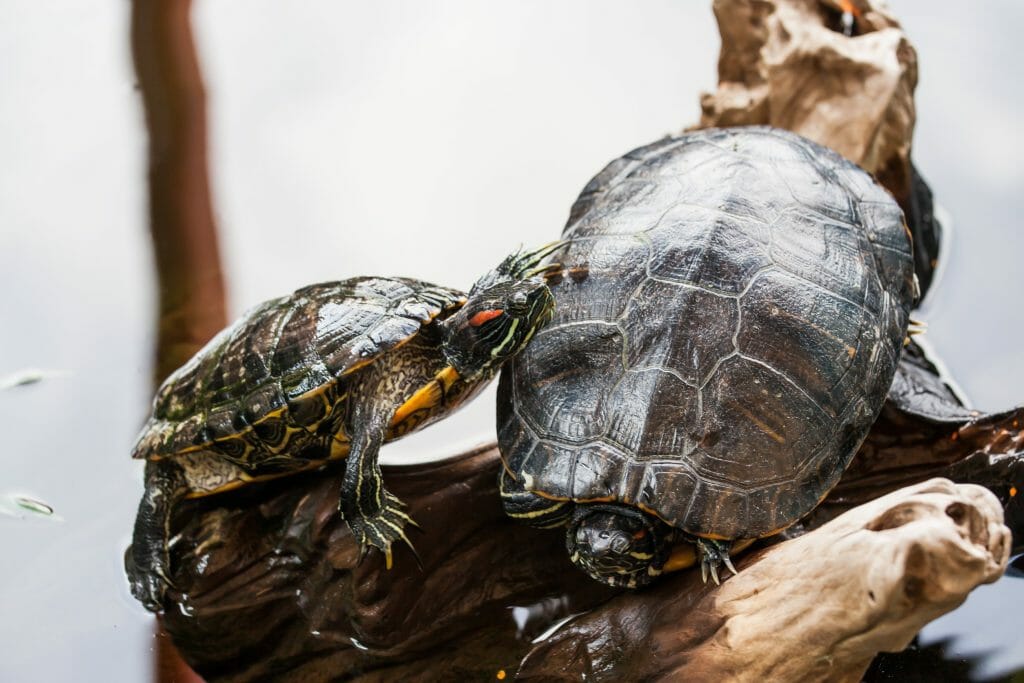
Separate Your Turtles
When turtles are kept together in small tanks, they often bite each other due to the lack of space. Therefore, separating your turtles into individual tanks is crucial before training them. This will help you avoid biting incidents in the future and train them using positive reinforcement methods- this will make them less aggressive towards other turtles. For example, if your turtle lives in a group tank, it is best practice to use a barrier such as mesh or screen so that they do not come into contact with each other unnecessarily.
Give Them More Food
Providing enough food for your turtles is one of the best ways to prevent biting and fighting. In addition, keeping their enclosures clean and providing them with plenty of water will help keep them healthy. In addition, make sure to monitor their feeding behavior regularly and track any changes in their activity levels. Feed them a diet mainly consisting of vegetables and insects – this should be plenty nutritious!
Provide a Positive Environment
Turtles are social animals and need interaction to thrive. If you provide them with a clean, positive environment, they will stop biting each other. Make sure to keep your turtle’s space clean and offer plenty of toys and hideouts to keep them busy.
Avoid Petting
Mishandling a turtle can lead to its death. Instead of petting your turtle, use feeding dishes or purchase frozen food designed explicitly for turtles. If you must put your turtle, do it gently and ensure the area around the feeding dish is distraction-free so that the turtle doesn’t interpret this as an invitation to feed from you. There are also deterrents such as bells or mirrors that may help keep turtles separated during feeding time.
Mating Problems
Turtles can get territorial during mating season, which can result in biting. If the problem persists, it might be time to take your turtle to a vet for a check-up. However, you can do a few things to try and prevent this from happening: provide them with hiding spots or establish dominance between them early on; keep their environment clean and free of obstacles; socialize them as much as possible!
Take Them To The Vet
A turtle biting someone is never a desirable situation and can quickly escalate into something much worse. That’s why it is essential to take your turtles to the vet for assessment as soon as you notice that they’ve started biting people or other animals.
Your turtle may have contracted some disease or injury, which requires quick and proper treatment to prevent severe biting episodes from happening in the first place. Also, ensure you keep an eye on them – even if they seem okay at first – so that you can detect any red flags early on and take appropriate action before things get out of hand.
Create Walls
Walls are an essential part of turtle habitat. By creating barriers between turtles, you can help to prevent them from biting each other and fighting. You will need to ensure the barrier is big enough for your turtles to move around but small enough so they can’t get through it. You can use fences, screens, or even pieces of wood, whichever option works best for you and your turtles.
What Are the Most Aggressive Turtle Species?
The red-eared slider turtle is among the most aggressive turtle species. This turtle can bite hard, and if you’re ever bitten by one, seek medical help immediately. Be sure to observe your surroundings near a red-eared slider turtle if they act on instinctual aggression. In the meantime, don’t try to handle or restrain them – they may become agitated and bite back.
Snapping Turtles
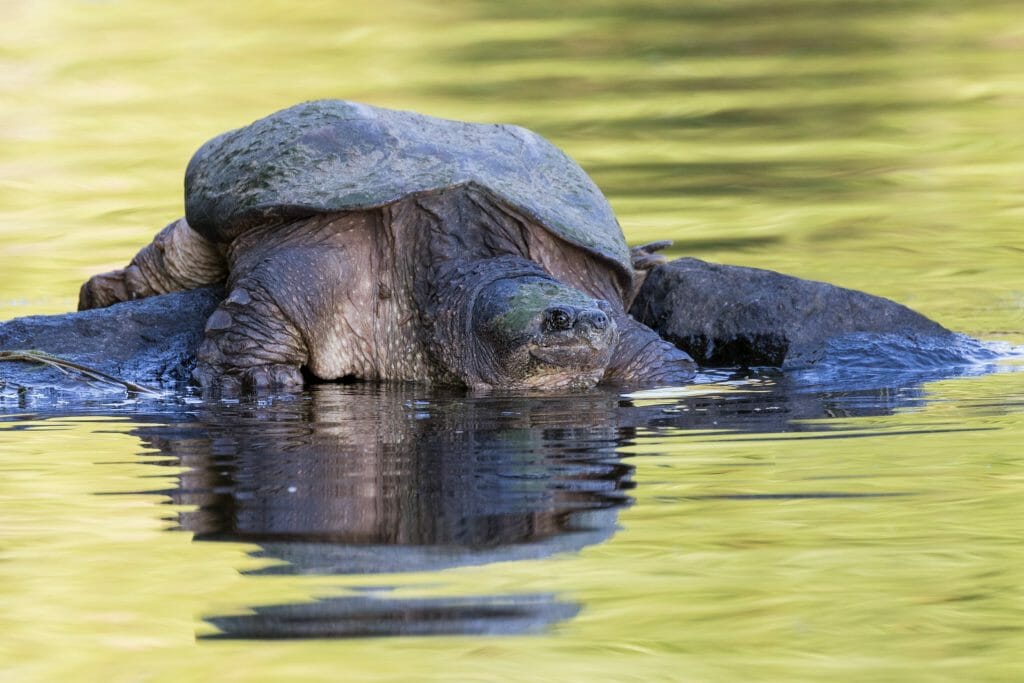
Snapping turtles are one of the most dangerous turtle species and should be avoided at all costs! If you do come across one in the wild, your best bet is to back away slowly and avoid making any sudden movements. They usually attack other turtles for dominance reasons or to protect their turf. So if you find yourself in this situation, stay calm, and wildlife officials will take care of the rest.
African Helmeted Turtles
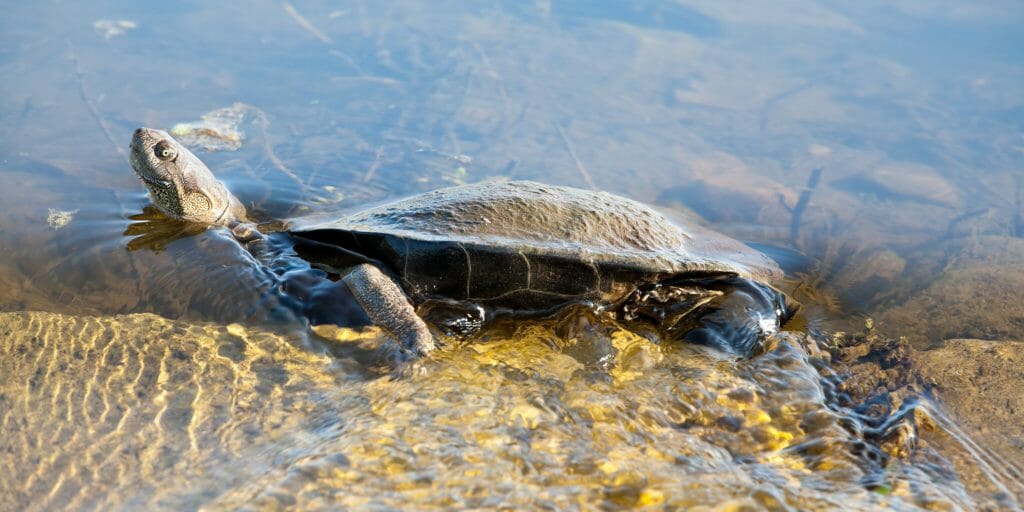
African Helmeted Turtles can be quite aggressive and should not be approached unnecessarily. If you do come across one, the best thing to do is keep your distance! These turtles are also known to bite other turtles to establish dominance- so it’s always best to avoid any disputes.
Snakenecks/Sidenecks
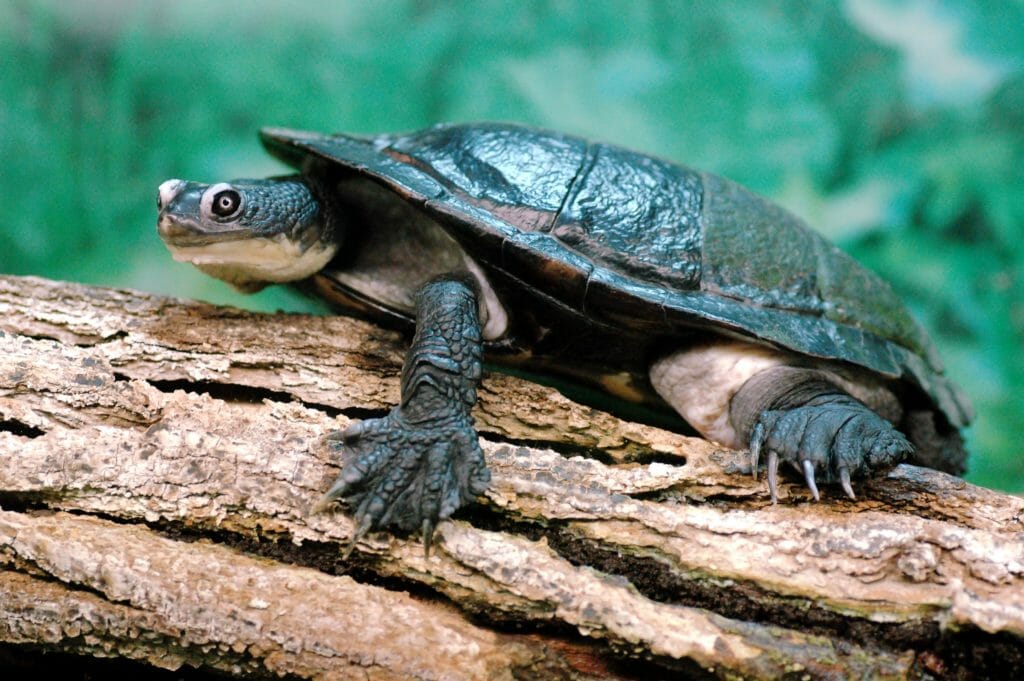
Snakenecks (or side necks) turtles can bite if they feel threatened and are territorial by nature. Among slider turtles, red-eared slider turtles rank as one of the most aggressive species- biting is not uncommon when competing for mates or food. In addition to being territorial, snake necks tend to be fast swimmers and good escape artists and can be found in warm climates throughout North America.
Soft-shell Turtles
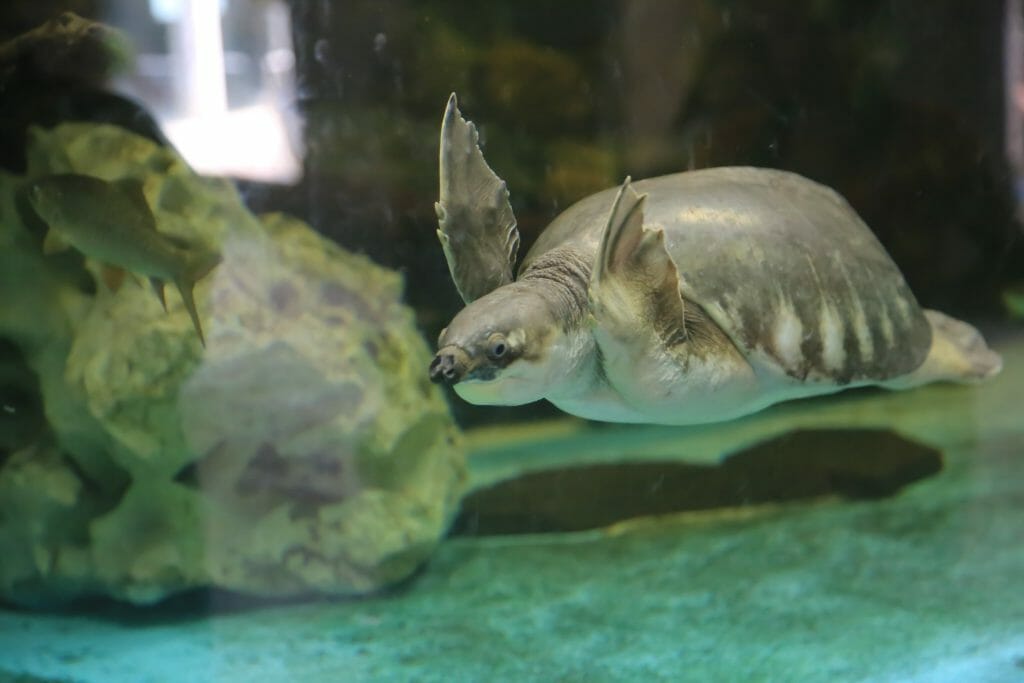
Soft-shell turtles are typically shy and gentle creatures but can bite if provoked or become territorial. If you live in an area where red-eared slider turtles are common, it is best to avoid them as much as possible.
What Are the Least Aggressive Turtle Species?
Red-eared slider turtles are the least aggressive turtle species, but they can still bite if provoked. If you live in an environment with other turtles, keep your distance and avoid provoking them. So, the next time you’re out and about and see a red-eared slider turtle, don’t be surprised if they bite you – they’re just trying to protect their territory!
Diamondback Terrapins
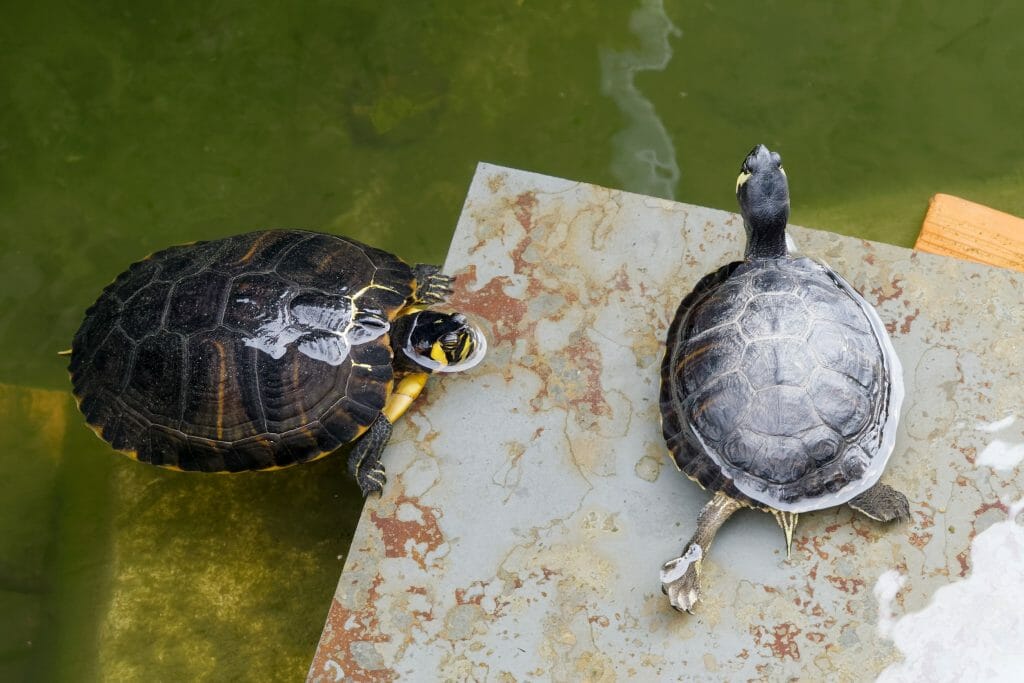
If you come across a diamondback terrapin in your garden, do not be alarmed – they will most likely ignore you. The turtle is known to bite only when it feels threatened, or its eggs are being threatened. These turtles can grow up to two feet long and weigh around forty-five pounds. They are one of the least aggressive turtle species and make great pets if handled appropriately.
Red-Bellied Cooters
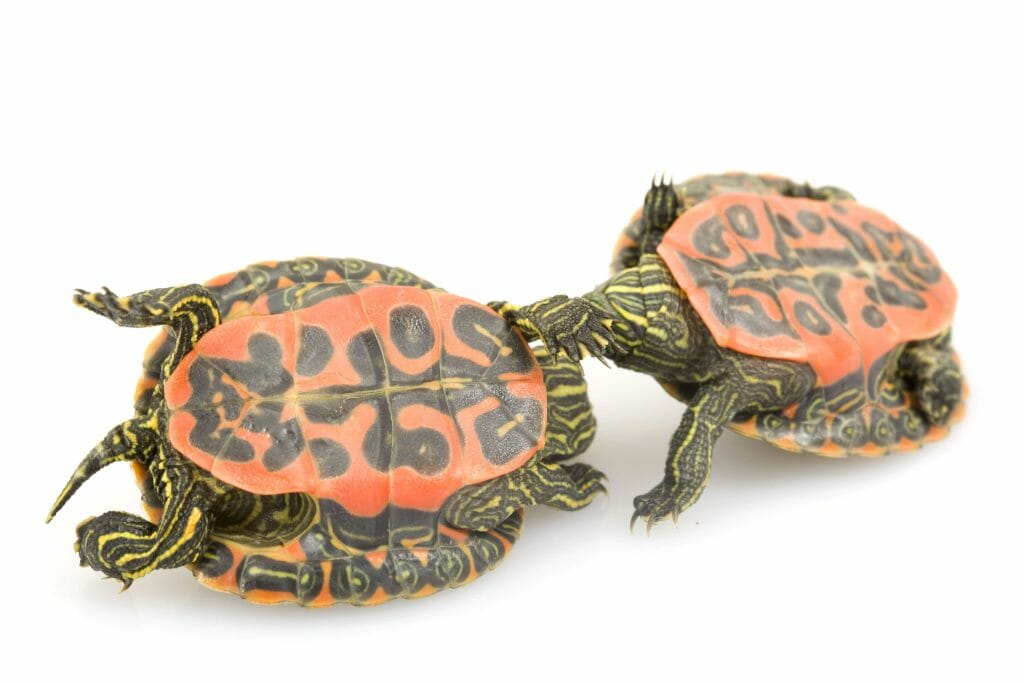
If you live in an area with many red-bellied cooters, it is best to keep your distance! These turtles are relatively peaceful and will only attack if they feel threatened or if they are defending their territory. They tend to bite other turtles when trying to squish or get the turtle’s food.
Box Turtles
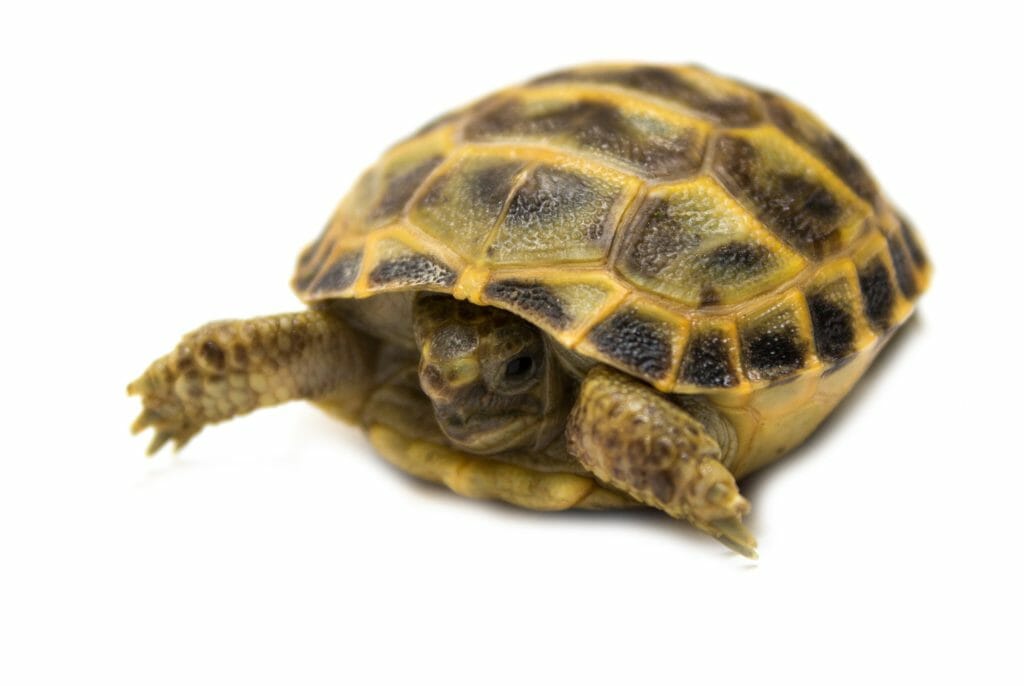
Box turtles are some of the most docile turtles and make great pets. They are easy to care for and do not require a lot of interaction, making them the perfect pet for people with little time or patience. However, if you do not handle them correctly, they may bite you as a defensive mechanism. Make sure to introduce box turtles slowly to new surroundings by introducing unfamiliar objects into their enclosure until they become used to them.
Two Red-Eared Slider Turtle as Tank Mates
Two red-eared sliders may live together if given enough space and water. However, when the situation gets too tense, one slider may lose its eye or be fatally wounded in a territorial dispute over water or food. Sliders are terrapins; as such, they spend most of their time on the ground crawling around, looking for prey. When two sliders get into a territorial dispute, they will bite each other!